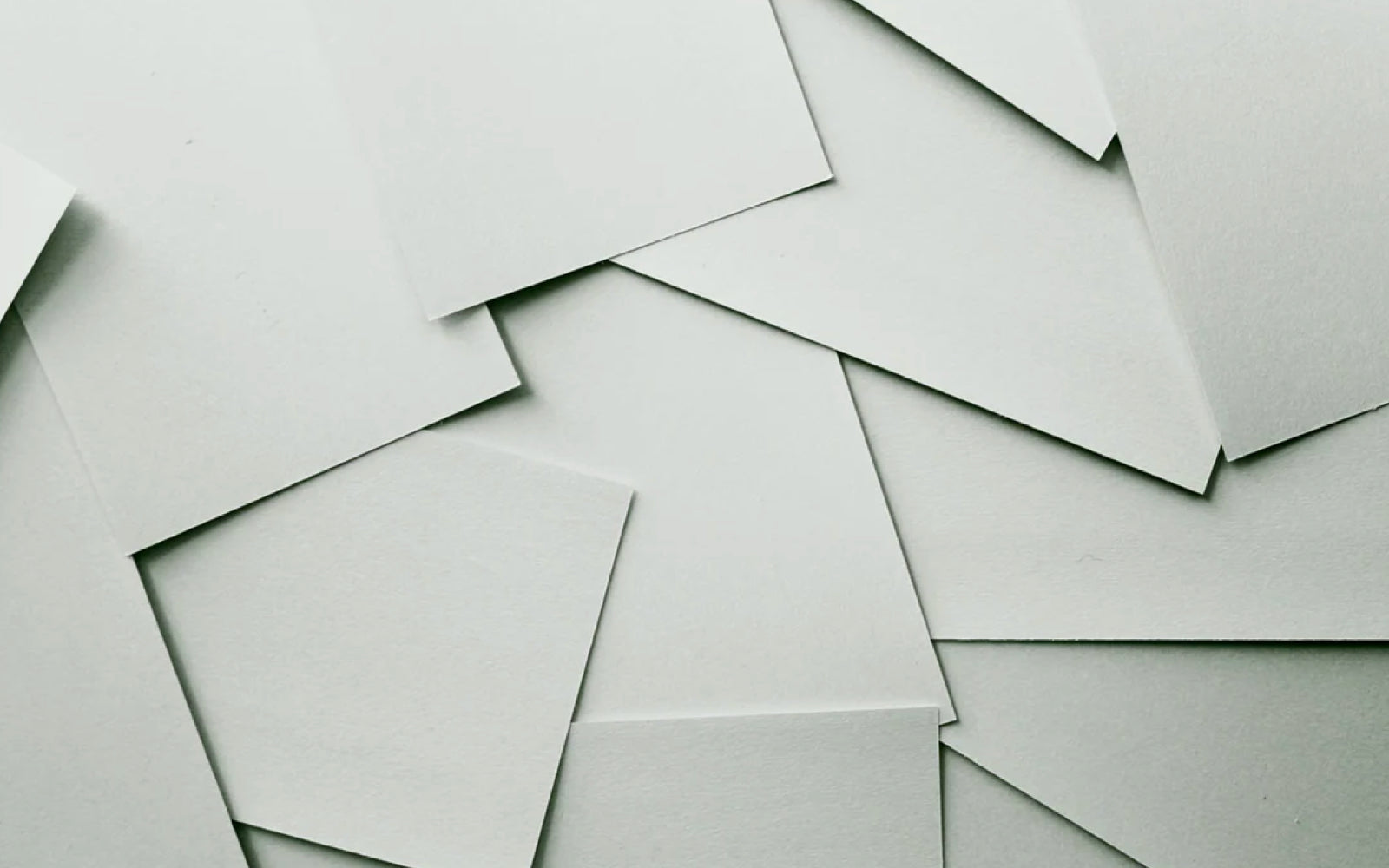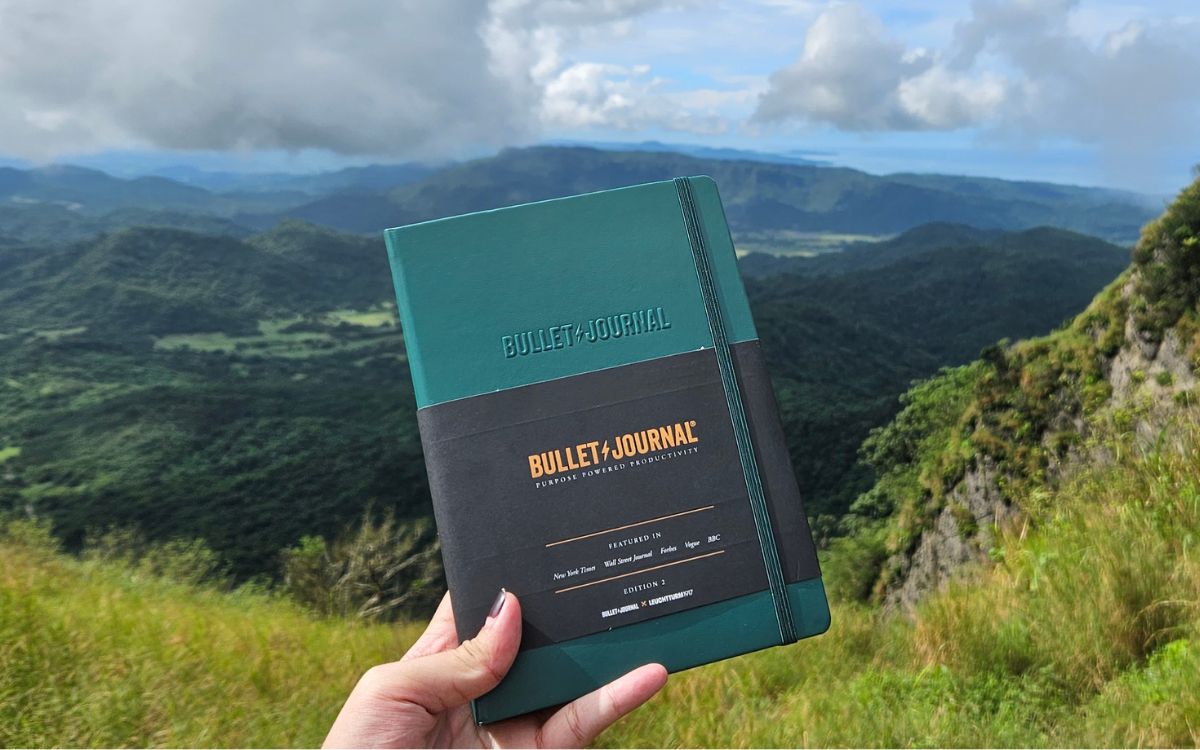Before we start, there are a few things you should know about me:
#1 I love tools and gadgets, and productivity tools are my personal favorite.
Back in the pre-smartphone age, when even laptops were not a commodity, I loved yearly journals, and the more “gadgets” they had — the better. For two or three years, I used a fancy annual planner with “extensible modules” like pages in different colors, sticky notes, and so on, and it was a delight. Not the most efficient, but a delight nevertheless.
As digital alternatives and obviously mobile apps became more accessible, I found “my new love.” After going through several trial and error cycles, I found the perfect digital workflow for me, which included Todoist, Evernote, and of course, Google Calendar.
#2 I have the worst handwriting ever.
One of the strongest memories I have from elementary school is the remarks I got year after year in my report card: “your handwriting must be improved!” And it was and still is true. If I write without paying attention to how I write, chances are even I won’t be able to read the text later.
This fact is obviously connected to the first one: the reason I enthusiastically adopted digital productivity tools was not only their efficiency but the fact I was able to read what I wrote later.
#3 I can’t draw.
I can’t draw even a straight line (if you expect a straight line to actually be straight that is) or a circle (as opposed to a deformed egg).
I love to doodle, I admit that. But like my handwriting, my doodles are best for “send and forget” mode. The chances of making sense of them later are practically zero.
So, now that I shared these three fascinating facts about myself, the topic of this post becomes a real mystery. How come a person who loves digital tools, who has horrible handwriting that caused him to prefer typing in practically any context, and who can’t even draw a straight line, how come this kind of a person is writing a post about going analog?
It is a mystery we will soon unfold, but the more important question for me is: How does going analog support creativity?
BuJo is, by definition, 100% analog. It is built on the idea that you write manually: no typing, no shortcuts, no fancy editing tools, and not even a copy-paste functionality. Just you, a blank, physical notebook, and your favorite pen or pencil.
For a person like myself, this seemed for a long time, the most inefficient way to manage my goals, tasks, and notes. I loved the efficiency of the apps I worked with. They could store anything I dropped on them. They enabled me to move things around in a matter of seconds and find stuff I saved a year ago in no more than a minute. They were perfect. Too perfect.
When you work manually in an analog medium, there’s practically no chance to recreate this level of efficiency, and that, I realized, might just be the best selling point of going analog.
Most of the online material you will find about BuJo is overwhelmingly beautiful. There’s a large community of people who are investing a lot of their talent in beautifying their journals and turning them into small, living artworks. It’s beautiful to watch, but for a guy who can’t draw a straight line, it was mainly intimidating. I still had to overcome my impossible handwriting, so obviously, I couldn’t imagine creating such a beautiful notebook.
The thing is, there’s really no need to. Just like in creativity in general, in BuJo, anything goes… as long as it works for you.
So, how does a method designed for organizing your tasks, projects, goals, and your life in general, but includes nothing more than a few guidelines and a blank journal promotes Creativity? I’m glad you asked…
The Unbearable Efficiency of Digital Tools
For years I’ve been trying different tools, methods, and apps in search of the most efficient ones for my needs. An efficient tool does not get in your way. It becomes seamless. It becomes your extension. And when that happens, you push it to its limits. Or more accurately, to your limits.
It is so easy to add tasks in my favorite to-do app, and it is so easy to add notes of any type you can imagine in my note-taking app… so easy that I did so mindlessly. I dumped so many things there, some of them important, and some just seemed to be relevant at some time. And when this backlog of items became too big to manage, I started to ignore it, which didn’t stop me from adding additional items to the pool.
Now, nothing in Bullet Journaling prevents you from recording a lot of stuff during the day. But, and that’s a crucial ingredient, you cannot avoid reviewing the tasks and notes you curated during the day and decide what you are going to do with them. Whether you choose to delete them or address them or migrate them to a dedicated place, you have to decide. This is very similar to the concept of reviewing your inbox in the Getting Things Done (GTD) method. But the fact that this is done in an analog, slower, and “less efficient” platform makes all the difference. You have to practice Reflection, and you have to consider what you do thoughtfully because the overhead of manually moving stuff around is not negligent.
Reflecting on the things you observed and on the insights you had during the day is an integral part of any creative flow. At least for me, it was too easy to skip with the digital tools. I knew the stuff I collected could be found later, so I often skipped this reflection activity. With my simple journal, I can’t afford to do that.
As a side note, even in times when I forced myself to review the day with the apps I’ve been using, things were scattered across different apps. At a minimum, I had to do this review in two separate tools. With my BuJo, I just have to read 1-3 pages I filled during the day. No more, no less. It’s all there in the same place just as I captured it.
OK, so this is obviously an issue of self-discipline, and working on an analog medium helped me develop the positive habit of reviewing what I wrote during the day and reflecting on it. But working with a pen and a notebook also forced me to slow down.
The Need to Slow Down
My notebook, combined with my awful handwriting, forces me to slow down. I have to take the time to plan my day with a pen and paper. I am writing way more slowly than I am typing, especially since I need to craft the letters in a way that will allow me to read what I wrote later, and I am less distracted than when I was doing all that on my laptop or on my smartphone. A notebook is a way calmer and slower medium. And that works out perfectly for me.
Take my handwriting, for example. Being as bad as it is, I decided to write practically everything in caps. It makes my script bearable, and I can actually understand what I wrote. But, it is obviously a much slower way to write. Which is not a bad thing. I have the time and the bandwidth to think about what I write down, and I try to choose my words more wisely. I honestly thought this is a downside until I realized I am not missing anything by working slower. On the contrary. And as it happens, I just came across an article by Ryder Carroll, who uses the same practice (way before me obviously) and for the same reasons.
Like the unbearable efficiency of dumping tons of stuff in digital tools, the fact they are so fast, even seamless, just pushes us to rush to the next item on our list, without contemplating what we are writing. Again, you can be more disciplined and force yourself to slow down while using apps or turn off all notifications for less distraction. Going back to a more basic medium, however, felt more natural to me. I don’t have to fight anything. I just do what this medium calls out for. Slowly writing in caps in my notebook is almost meditative, no matter what deadline is ahead.
Getting Lost
In my article Get Lost from a couple of years ago, I wrote about how we no longer experience being lost. We know exactly where we are at any given moment, and more importantly, we know the fastest route to our destination. This is true in more than just the geographical sense: we have the best tools in the history of humankind to retrieve information or answer a question. And that is a problem when you consider Creativity.
Creativity is almost always derived from detours, from unexpected encounters, and surprises you find along the way. When you take the shortest path, you are working in auto-pilot mode, and you have a much smaller chance to come across something you haven’t looked for.
Unless… unless you work in a medium that cannot send you instantly to your desired location. Just like having a higher chance to observe and discover while walking compared to when driving, when you flip through a notebook looking for something, you are likely to come across surprising pieces of information you once collected. It’s a much slower and less efficient way to retrieve data. It is, however, undoubtedly a better setup for creative insights to emerge.
I might be looking for my notes for this post, and even if I know their page number, I have to flip through some random pages to get there. And here and there I find little treasures from a week or a month ago which just might spice up this post, or plant an idea for the next post, or for a new project. When I stored everything digitally, I would rarely come across something I wrote before by accident.
Hand Made
Apart from being slower, writing by hand has a significant impact on the brain. Research shows that writing by hand promotes better memory and affects positively the ability to recall what you wrote. Writing also activates different (and more) parts of your brain than typing. In plain words, writing keeps your brain in shape.
And the same applies to doodling. When you doodle, the blood flow to your brain increases, and so your brain stays in better shape. Needless to say, your drawing skills are irrelevant in that respect.
Now, sure, you can always record notes and tasks digitally and have a pencil and a paper with you for doodling. But what I found out is that bringing the analog medium to the front actually drove me to doodle more. I take notes, and then emphasize some of them with small doodles. I create lineups for my articles and workshops, which look like a mesh between a mind-map, linear notes, and strange doodles. Instead of a predefined, neat template, I experiment with all these elements in real-time. And it feels great!
Endless Flexibility
Which brings me to the last point: no medium is more flexible and open than a blank page and a few pens and pencils. Why do you need your journal and planner to be flexible? Good question!
I already mentioned the strange format in which I write my lineups now — an arrangement that will be hard, if not impossible, to achieve digitally and is so natural and fluent on paper. But the flexibility of this medium can go much further. Here’s an example.
When I started experimenting with BuJo, I knew I will need a daily plan implemented in it somehow: I needed a way to visualize what I am going to do the next day. The apparent implementation was to emulate a kind of a day-view as you know it from any calendar application. After a couple of weeks, I realized what I knew deep inside before that, that some of the personal commitments I take are left undone at the end of the day, and I keep postponing them. I am not talking about “hard commitments” to other people, but things like working on my book, or working on content for the seempli platform. I also realized that this was not due to lack of time, but rather due to lack of energy. At some points throughout the day, I was just not up to creative work.
Now, this is not a new concept. If you read Todd Henry’s The Accidental Creative, you are familiar with the idea of managing your creative energy, and so did I. But, I never took it into practice in a consistent, methodical way. Now, with my super-flexible empty notebook, it was easy to do. I added to the daily plan format a second dimension. Each activity, task, or meeting is now placed on the plan based on their time, and the level of energy they require. And on top of that, I keep track of my actual energy level throughout the day, so I will be able to learn and optimize my planning in the future. It might sound complicated, but it was so easy to do and super useful, at least for me.
The point is not that you should try my way of planning or tracking your day, but that a blank notebook allowed me to do what no other medium did. I might have been able to emulate the same idea on a simple digital calendar. But I haven’t as it was not natural. A pen and a paper allowed me more room for Creativity — not in the sense of decorating the notebook but in the pure functional way: finding creative ways to achieve more of my goals and optimize my work. You might have an entirely different set of challenges and completely different ideas on how to address them. Rest assured that an analog medium is flexible enough to actually implement them.
The transition to an analog way of planning and managing my work and collecting insights and notes created more bandwidth and a better setup for me to be creative. It fits better into the way we are wired to be creative. An analog system based on simple tools seems like a limitation — in more than one sense, the digital tools were designed to solve many of the inherent problems of an analog system. But sometimes, the solution becomes the problem. Going back to a simpler way of doing things is more pro-creative. Many of the benefits of the digital tools were actually counter-productive when it came to our creative power.
But even more critical, regardless of how great your workflow is, experimenting with new tools or ways of doing things is a great experience. In a year from now, my workflow might look completely different. I might go back to some of the digital tools or try a hybrid approach or any other approach I can’t even imagine now. No matter how optimized my workflow is, I will continue to experiment and try other practices as well.
Sticking to the same methods and tools for too long, no matter how effective they are for you, prevents you from discovering new opportunities. Even if most such experiments fail or prove to be ineffective, the benefit is often in the experimentation itself. More often than not, you will learn something new along the way — something about different ways of doing things, about other people, and maybe, just maybe, about yourself.
About the Author:
Lidor Wyssocky is a photographer and the creator of seempli - the most extensive platform for igniting creativity and imagination in everything you do. Lidor works with individuals, teams, and organizations seeking to develop, master, and apply creativity.
More at: seempli.com
Twitter: @seempli






Leave a comment (all fields required)